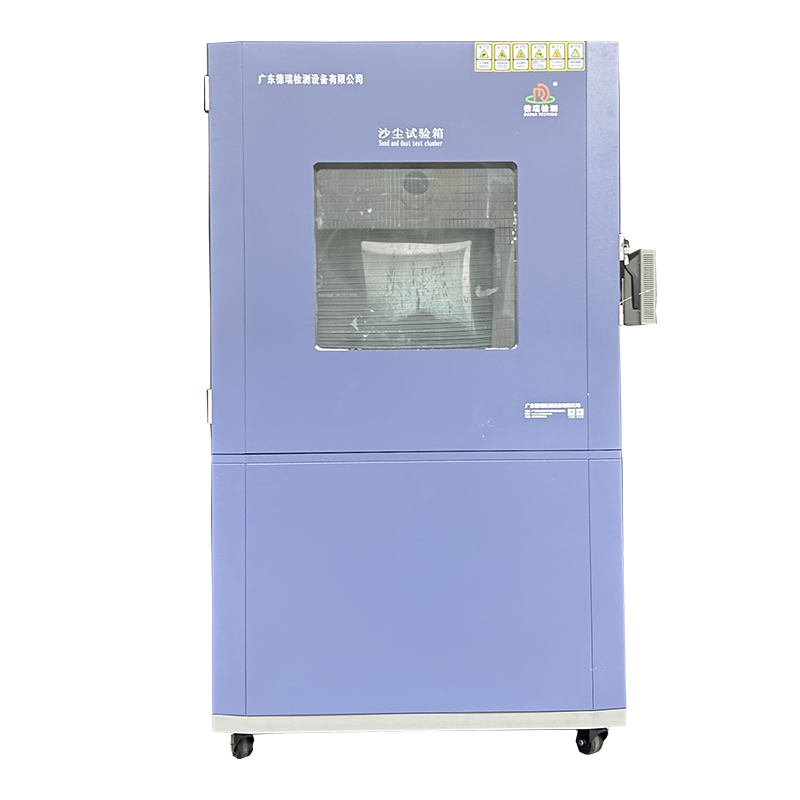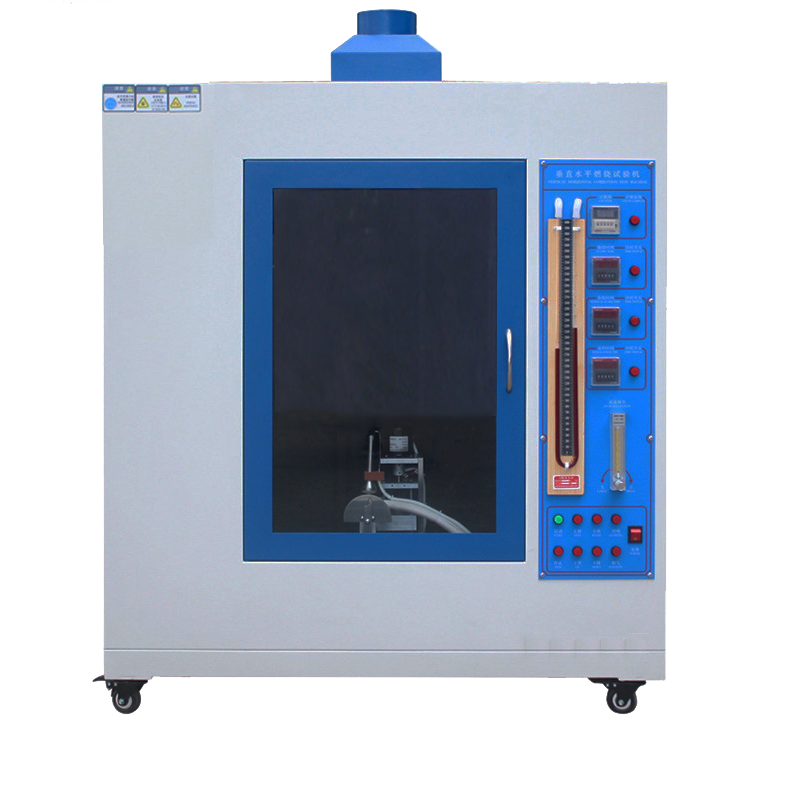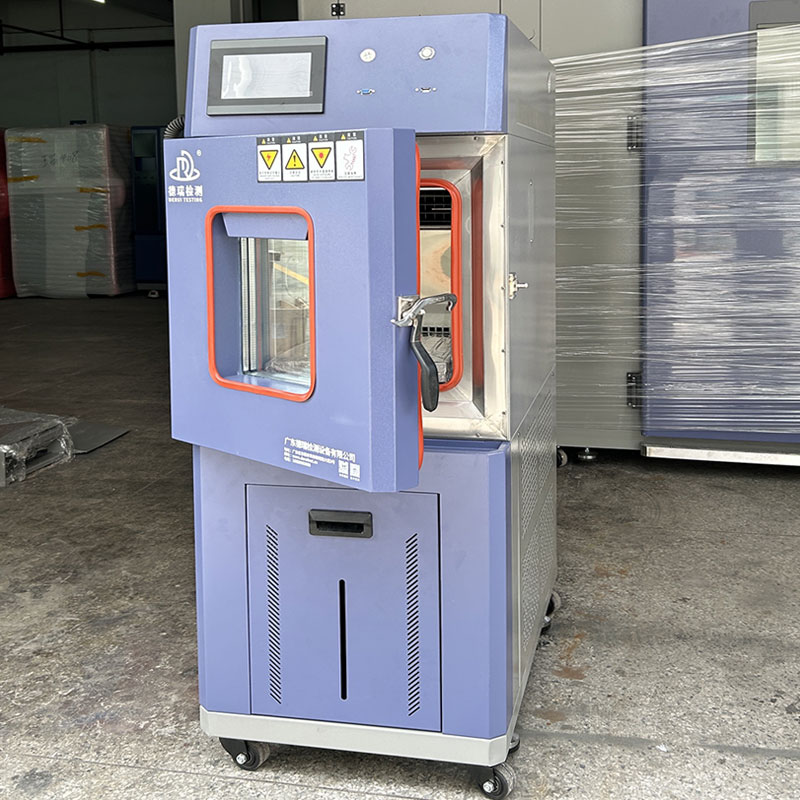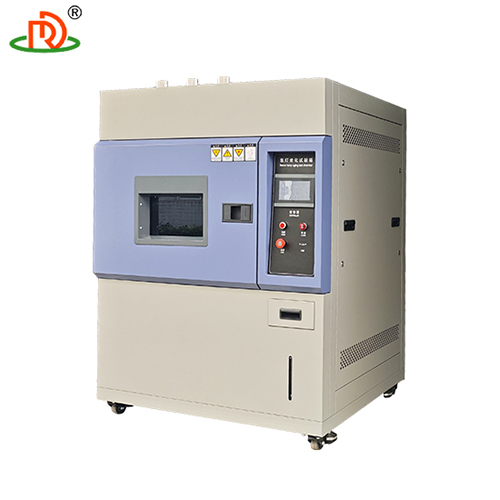Product Description
| Item | Specification |
| Internal dimension | 800W*800D*800Hmm |
| External dimension | 1300W*1000D*1700Hmm |
| Test sample | Size W20cm- L30cm-D15cm, weight 0.5kg |
| Chamber material | SUS304 Stainless steel |
| Specifications of square mesh sieve | Mesh hole 75um, mesh metal wire diameter 50um |
| Talcum powder amount | 2kg/ m |
| Airflow speed | No more than 2m/s |
| Door | Left open door with tempered glass door |
| Controller | PLC Touch Screen controller, programmable to set as below cycle: a. Blowing dust time (Stop/Blow) m/s b. Cycle time: can be adjusted c. Pre-set test time: 0s ~99m99s |
| Vacuum system | Pressure gauge, air filter, Pressure regulating FRL, connecting pipe, Vacuum pump |
| Vacuum pump capacity | 60-600 L/H |
| Fan | Centrifugal fan |
| Safety protection devices | Meter over-temperature function, Phase shortage protection, Power short-circuit protection |
1. Functions and uses
- Simulate complex dust environment:
Through the dual-circulation airflow system, it simulates the complex dust flow in the natural environment, such as wind sand and dust, to ensure the accuracy and authenticity of the test.
- Dual-circulation airflow control:
The equipment is equipped with two independent airflow circulation systems, which can control the airflow in different directions and speeds to simulate the flow of wind and sand in multiple directions.
- Dustproof performance test:
Evaluates the dustproof performance of products in complex dust environments to ensure that their internal components are not subject to dust intrusion, which may affect their performance and safety.
- Comprehensive testing:
In addition to dust resistance, products can also be tested for their performance under different temperature and humidity conditions, as well as their mechanical and electrical properties.
2. Test standards and methods
IEC 60529:
International Electrotechnical Commission's test standard on the protection level of the enclosure, which specifies the dustproof test methods for IP5X and IP6X.
GB/T 2423.37:
Chinese national standard, which specifies the method of sand and dust test in the environmental test of electrical and electronic products.
ISO 12103-1:
International Organization for Standardization (ISO) standard for road vehicles - Environmental conditions and tests, specifying methods for sand and dust tests.
MIL-STD-810G:
U.S. military standard specifying environmental engineering considerations and laboratory test methods, including sand and dust testing.
ASTM D1735:
American Society for Testing and Materials (ASTM) standard for the testing of paints and related coatings for dust resistance.
3. Advantages
- Dual Cycling Airflow Control:
Simulates complex wind and sand flow environments with a dual-circulating airflow system to improve the accuracy and realism of the test.
- Precise Control:
The ability to accurately control dust concentration, airflow rate and temperature and humidity conditions ensures a stable and consistent testing environment.
- Versatility:
Can not only carry out dustproof test, but also can carry out temperature, humidity and other environmental factors simulation test.
- Programmable control:
Users can set different test parameters according to the need to improve the flexibility and adaptability of the test.
- Simulation of real environment:
Through the double-circulation airflow and dust composite test, it simulates the dust conditions in the real environment and improves the reliability of the test.
Working Principle:
Sand and dust generation: The tester is equipped with a sand and dust generation device inside, which can introduce sand and dust particles into the test chamber.
Airflow circulation: Through the double circulation airflow system, the sand and dust particles are evenly distributed inside the test chamber, simulating the sand and dust drift in the natural environment.
Sample Placement: The PV inverter or other products to be tested are placed in the designated position inside the test chamber.
Parameter control: Setting and adjusting parameters such as airflow speed, sand and dust particle size, concentration, temperature and humidity through the control system.
Testing process: Under the set parameter conditions, the sand and dust test is carried out for a certain period of time, and the performance changes of the products are observed and recorded.
Result analysis: After the test, the appearance and performance of the product are checked and evaluated to analyze its adaptability and reliability in the sand and dust environment.










 English
English Spanish
Spanish French
French German
German Italian
Italian Chinese (Simplified)
Chinese (Simplified) Japanese
Japanese Korean
Korean Arabic
Arabic Portuguese
Portuguese